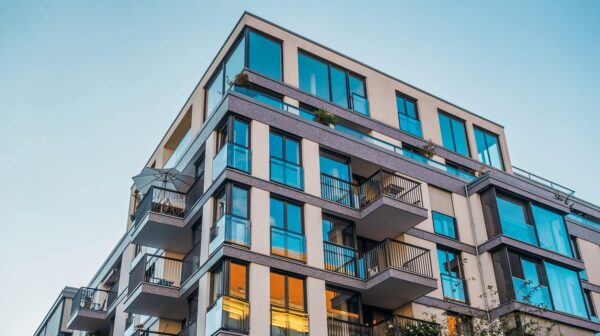This article is part of our series on Converting your commercial property to a condominium. Part 1 of this series considers the benefits of such conversions; Part 3 of this series provides a brief overview of the condominium conversion/creation process.
As noted in Part 1, when we talk about condominium conversion of commercial or industrial properties, we are not talking about changing their uses to become residential complexes. While that might have been a popular trend, what we are suggesting is that owners of such properties can consider converting them to condominium not to change their use but solely to obtain the benefits that becoming a condominium can provide even while their current non-residential uses and occupancies are continued. In this article, we provide an overview of the various types of tax consequences that might apply when making this kind of change.
Income tax / capital gains on conversion
There will be no immediate income tax or capital gains consequences on the mere conversion of your commercial or industrial property to condominium. This is true even if the market value of the property overall increases (on account of it now containing multiple marketable units, the aggregate market value of which might exceed the pre-conversion value of your property).
When the conversion occurs, there is no “disposition” for the purposes of the Income Tax Act (the “ITA”). The owner/developer of the subject lands starts out as the owner of the property as a whole, and ends up (as a result of registration of the condominium) as the owner of all of its individual units and common elements.
Income Tax / Capital Gains on Sale
A. Income Tax vs. Capital Gain
The story changes, however, when units begin to be sold. It is then that income or capital gains tax will need to be paid. Which applies will depend on whether the converted and sold property is considered “capital” or “inventory”. As the tax rate for capital gains is lower than for income, the former will typically be the preferred outcome. To accomplish that, the desired result is usually that a capital property converted to condominiums remains a capital property after the conversion. Under the ITA, “capital property” includes depreciable property and any property that, when disposed, would result in a capital gain or loss. Often, this means property that is held with the intention to earn income from the use of it or for investment purposes. Alternatively, to be considered “inventory”, the disposal of that property increases profit; in other words, it would be property held for the purpose of being sold. The mere fact of conversion to condominium is not determinative of the category into which the property will fall. The CRA considers the intent of the taxpayer to make this determination.
If your intent in the conversion is to be able to sell all or some the units individually after conversion, then it is likely the property – at least, the units subject of that intention – will be classified as inventory. However, if your intent is solely to acquire the greater flexibility and financing options (discussed in Part 1 of this series), while continuing with your current use and occupancy of the building, then the property will likely remain treated as capital property.
It is possible that each unit in the condominium could be subject to a different designation based on how you have planned to deal with them after conversion. If the intention changes on conversion (e.g., property that was held as capital is converted for the new intention of selling the units), that unit may be taxed partly as capital and partly as income. Also note that the determined intent need not match what actually occurs. For example, if you convert your capital property with the intention of continuing to hold it to gain rental income but then sell units soon after conversion due to, say, an unexpected change in your personal circumstances, you would have a good argument that the sold units should nevertheless still be considered as capital property.
B. Capital Cost Allowance
Along with the above tax consequences, when capital property is disposed of, there may be “recapture” of capital cost allowance (“CCA”). The CCA system is set up to recognize that the value of some assets decrease overtime. Each of these types of assets are assigned a “Class”. When you buy a depreciating asset, the cost of that asset is added to the undepreciated capital cost (“UCC”) value for that Class. Every year, you can deduct a portion of that cost from your income and the UCC value is adjusted accordingly. When you dispose of a capital property, if the UCC is less than the amount you received on the disposition, then there will be a recapture of CCA for the difference and this amount will be taxed as income. Conversely, if you have disposed of every asset in a class and the UCC is more than the amount you received on the disposition, then you will have a terminal loss which you will be able to deduct from your income.
For example, let’s say your property was purchased for $2,000,000 in 2022. It is decided that the portion of this price attributable to the parking lot at that time (which on conversion may become a parking unit or units) is $100,000 this becomes your UCC value for 2022 for Class 17 (the Class which the ITA has assigned for parking lots). Class 17 allows the value to be deducted by 8% each year. In 2025, the property was converted to a condominium but remained a capital property. The condominium consists of 5 commercial units and 10 parking units. Four of the commercial units are sold in 2026 and one is sold in 2027. In most cases, the CCA recapture or terminal loss would be calculated as follows:
| Example 1 – Property Increases in Value | Example 2 – Property Decreases in Value | |
|---|---|---|
| Cost for Property | $2,000,000 | $2,000,000 |
| Portion of Cost Attributable to the parking lot (later converted to parking units) | $100,000 | $100,000 |
| 2022 Class 17 UCC Balance | $100,000 | $100,000 |
| 2026 Opening Class 17 UCC Balance (deduct 8% per year) | $74,754.05 | $74,754.05 |
| Four Units sold in 2027 (includes 2 parking units each) | $2,500,000 (8 parking units worth $72,000) | $1,500,000 (8 parking units worth $40,000) |
| 2027 Opening Class 17 UCC Balance | $2,533.73 | $31,973.73 |
| One Unit sold in 2028 (includes 2 parking units) | $750,000 (2 parking units worth $18,000) | $375,000 (2 parking units worth $10,000) |
| Amount Added or Deducted (CCA Recapture) | CCA Recapture: $15,466.27 | Terminal Loss: $21,973.73 |
Property Taxes
Converting your property without altering your intention for the use of that property means that it will remain in the same property class. However, this does not mean that the amount of property taxes might not increase. Once the property is converted, rather than being subject to a single assessment based on the fair market value of the property as a single parcel, MPAC will assess each individual unit. If, as is typical, the aggregate market value of the units is greater than the pre-conversion value of the property, it is possible that the tax burden associated with the property will increase. However, this is a cost that might effectively be passed on to tenants or recaptured on sale of the unit.
GST / HST
On converting your commercial or industrial building to a commercial or industrial condominium (rather than to a residential condominium, which is not the topic of these articles), there will generally be no GST/HST payable. GST/HST might only be triggered after conversion to condominium if there is also a “change of use”.
Even though you are converting your commercial or industrial building to a commercial or industrial condominium, a “change of use” could arise if the extent to which the property is used for commercial or industrial purposes significantly (i.e., more than 10%) increases or decreases. For example, if, along with condominium conversion there was a renovation that added to, or reduced, the commercial or industrial space by more than 10%, then GST/HST might apply. Depending on whether the change is an increase or decrease in the amount of space used for commercial or industrial purposes, you will either be deemed to have paid (and thus obtain the ITC for), or deemed to have collected (and need to account for) the applicable GST/HST.
If there is no “change of use,” but simply a straight conversion of the property affecting only its title, then, as noted above, there should be no GST/HST consequences to consider.
While we believe the foregoing to be generally useful as you consider whether to convert your property to condominium, we note that taxation is a complex topic and this article provides only a simple overview for general information purposes. It cannot be relied on as formal advice for your personal situation. You should obtain the assistance of qualified legal and accounting counsel who can study and inform you about your circumstances before you take any action.






